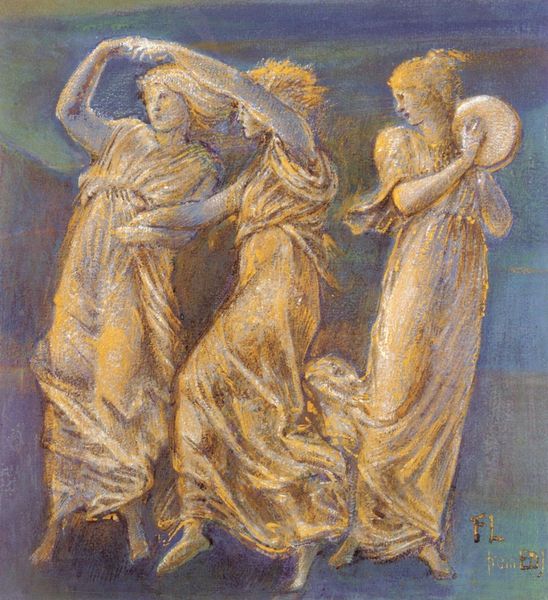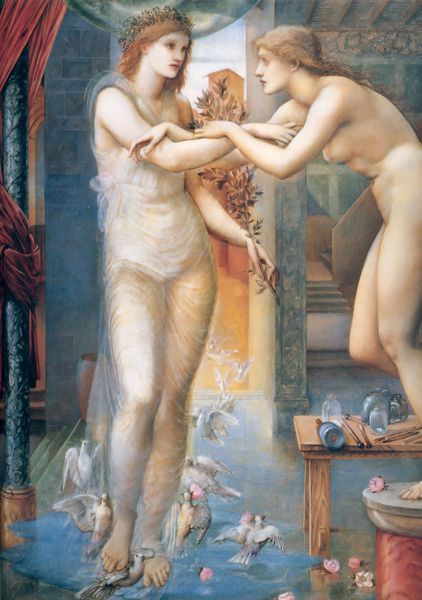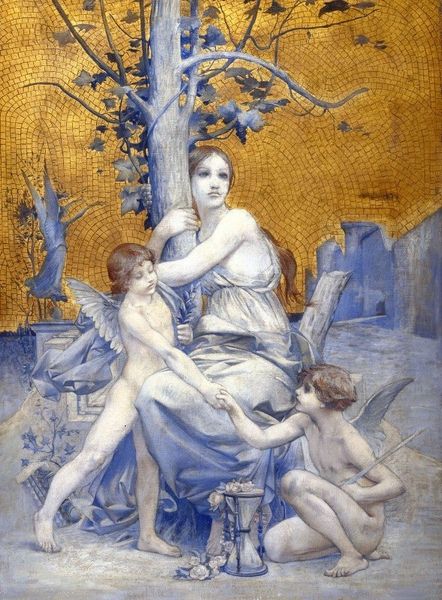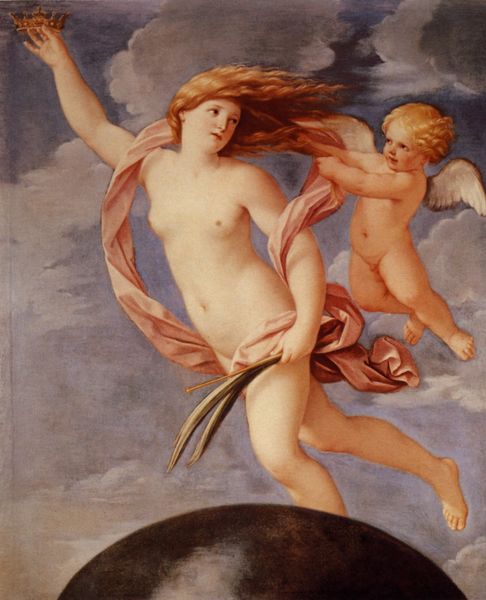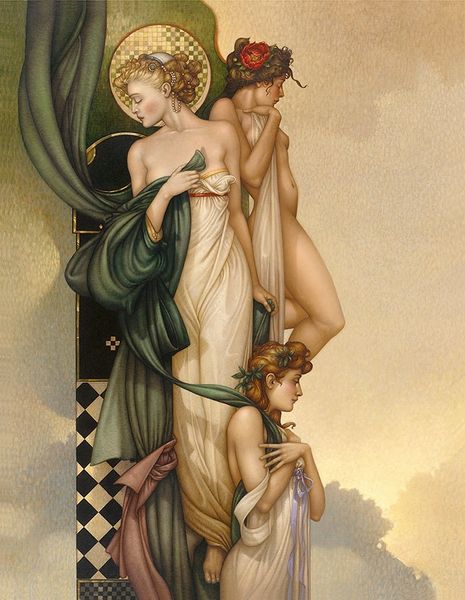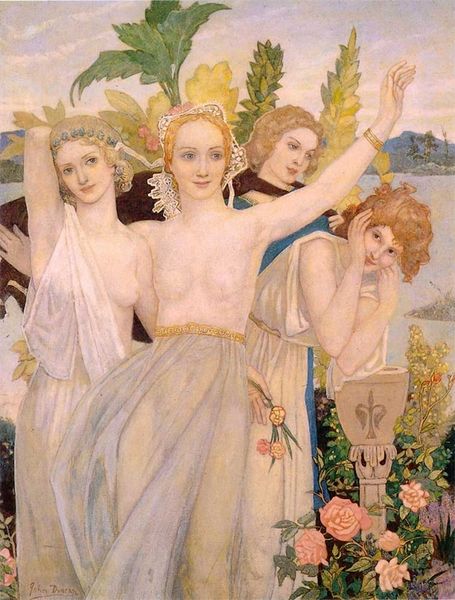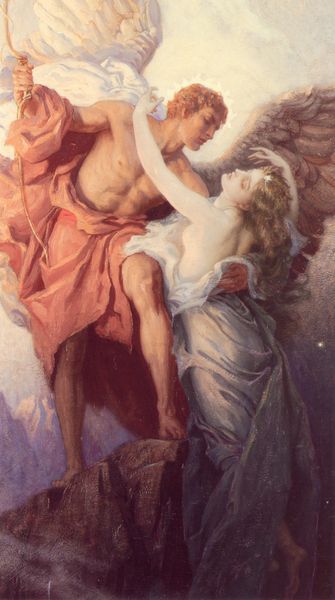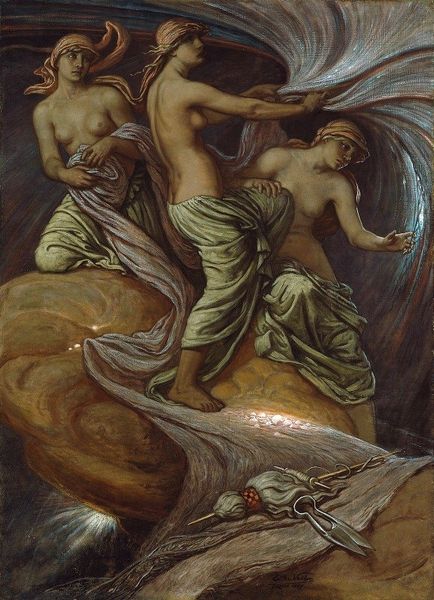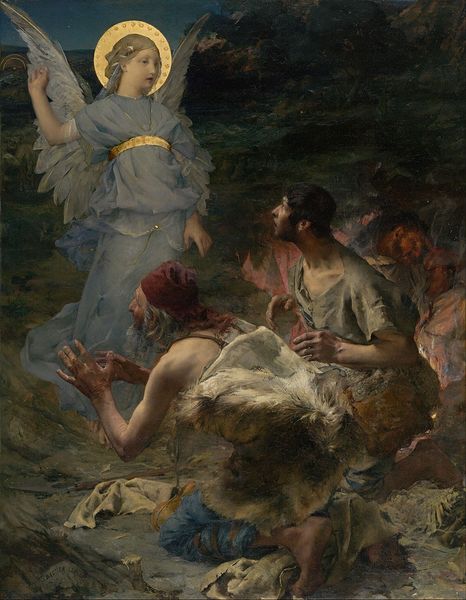
Dimensions: 180 x 367 cm
Copyright: Public domain
Curator: It evokes such lightness! It's almost dizzying, seeing these figures floating in what looks like clouds. Editor: That's a good observation. This oil painting, entitled "The Dance," was completed in 1856 by William Bouguereau. Bouguereau was a prominent figure in the French academic painting tradition, a style deeply intertwined with the societal and artistic conventions of his time. Curator: Absolutely. One sees that legacy here. The idealized figures, the polished surfaces... How does the allegorical approach reflect or perhaps challenge its era's notions about the arts? Editor: The composition certainly emphasizes a floating elegance, aided by a careful arrangement of colour—the striking triad of blues, golds, and creams seems almost staged, doesn’t it? Curator: Exactly! Bouguereau strategically utilized this symbolic tableau to connect with contemporary tastes, portraying high art as uplifting and harmonious, serving a purpose during a period of considerable social and political upheaval. Editor: It's interesting that you see harmony. I see a bit of contrivance. Notice the central figure in white—her arm is extended perhaps a bit too perfectly, creating a deliberate visual line. It's as if Bouguereau is less concerned with the authenticity of the dance and more interested in choreographing a beautiful image. Curator: Maybe...But does that calculated presentation negate the emotional experience? I perceive it as an assertion of beauty’s potential to elevate the public sensibility. Bouguereau’s intent may not have been subversive, yet in emphasizing beauty, his work carves a niche for itself amid the more cynical artistic dialogues of its time. Editor: A very diplomatic assessment! Perhaps that balance of artistic license and audience appeal contributes to its continued appeal. Well, I must say, looking at this composition and reflecting on its intent, is quite satisfying. Curator: Indeed. And considering its socio-political role reminds us of how art functioned publicly then. It gives it renewed relevance now.
Comments
No comments
Be the first to comment and join the conversation on the ultimate creative platform.

